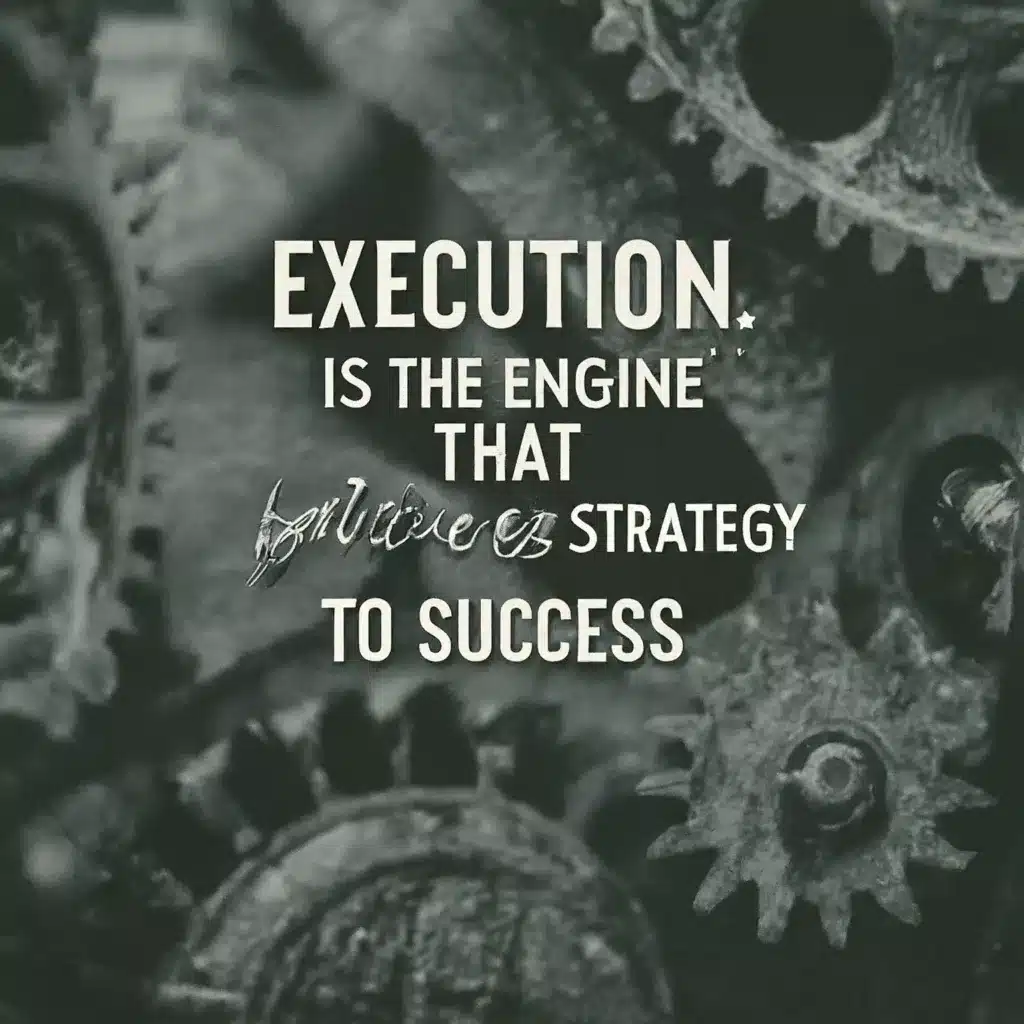In the dynamic landscape of business management, crafting a robust strategy is only half the battle won. The true test lies in effectively translating that strategy into action and achieving desired outcomes. However, all too often, organizations encounter a significant gap between strategy formulation and execution, leading to missed opportunities, wasted resources, and stagnant growth. In this comprehensive guide, we will delve into the challenges inherent in bridging the gap between strategy and execution and provide actionable strategies for overcoming them, ensuring seamless alignment and successful implementation of organizational goals.

Understanding the Gap Between Strategy and Execution
Before delving into strategies for bridging the gap between strategy and execution, it is crucial to understand the nature of this gap and its underlying causes. The gap between strategy and execution arises from several interconnected factors:
- Lack of Alignment: Misalignment between strategic goals and day-to-day activities is a common challenge that impedes effective execution. When organizational objectives are not clearly communicated or understood, teams may pursue conflicting priorities or fail to prioritize strategic initiatives, leading to disjointed efforts and suboptimal outcomes.
- Inadequate Communication: Poor communication channels and ineffective communication practices can hinder the flow of information and coordination between different levels of the organization. Without clear channels for sharing updates, feedback, and insights, teams may operate in silos, unaware of how their efforts contribute to broader strategic objectives.
- Resource Constraints: Limited resources, whether financial, human, or technological, can pose significant barriers to effective execution. Without adequate resources, organizations may struggle to allocate the necessary time, manpower, and technology to execute strategic initiatives successfully, leading to delays, cost overruns, and compromised results.
- Resistance to Change: Resistance to change, whether from employees, stakeholders, or organizational culture, can undermine efforts to implement strategic initiatives. Fear of the unknown, inertia, and entrenched attitudes towards change can create roadblocks that impede progress and derail execution efforts.
- Lack of Accountability: Without clear roles, responsibilities, and accountability mechanisms in place, it can be challenging to hold individuals and teams accountable for their contributions to strategic execution. Lack of accountability can lead to finger-pointing, blame-shifting, and a culture of complacency that undermines organizational performance.

Strategies for Bridging the Gap
Despite these challenges, bridging the gap between strategy and execution is not insurmountable. With the right strategies and approaches, organizations can foster alignment, communication, resource optimization, and accountability, ensuring that strategic goals are translated into tangible results. Here are some key strategies for bridging the gap between strategy and execution:
Establish Clear Goals and Objectives
The foundation of effective execution lies in clearly defined goals and objectives that are aligned with the organization’s overarching strategy. Leaders must articulate a compelling vision and translate it into actionable goals that are specific, measurable, achievable, relevant, and time-bound (SMART). By establishing clear goals and objectives, organizations provide a roadmap for execution and empower teams to align their efforts towards a common purpose.
Foster Alignment and Communication
Effective execution requires alignment and communication at all levels of the organization. Leaders must ensure that strategic objectives are communicated clearly and consistently across the organization, ensuring that every member understands their role in achieving them. Regular updates, town hall meetings, and open forums can facilitate transparency and alignment, fostering a culture of collaboration and shared purpose.
Allocate Resources Strategically
Resource optimization is essential for successful execution. Organizations must prioritize resource allocation based on strategic priorities, ensuring that resources are allocated to initiatives that deliver the greatest value and impact. By conducting thorough resource assessments and aligning resources with strategic objectives, organizations can maximize efficiency and minimize waste, enabling effective execution.
Embrace Change and Innovation
Change is inevitable in today’s fast-paced business environment, and organizations must embrace change as an opportunity for growth and innovation. Leaders must cultivate a culture of experimentation, agility, and continuous improvement, encouraging employees to challenge the status quo, explore new ideas, and adapt to changing market dynamics. By fostering a culture of innovation, organizations can overcome resistance to change and drive successful execution of strategic initiatives.

Foster Accountability and Ownership
Accountability is essential for driving execution and achieving results. Leaders must establish clear roles, responsibilities, and performance metrics, holding individuals and teams accountable for their contributions to strategic execution. By fostering a culture of accountability and ownership, organizations create a sense of urgency and commitment towards achieving strategic goals, driving execution excellence and organizational success.
Conclusion
Bridging the gap between strategy and execution is essential for organizational success in today’s competitive business environment. By addressing challenges related to alignment, communication, resource optimization, change management, and accountability, organizations can ensure that strategic goals are translated into tangible results. By fostering a culture of alignment, collaboration, and innovation, organizations can overcome barriers to execution and achieve their desired outcomes, driving sustainable growth and competitive advantage.

